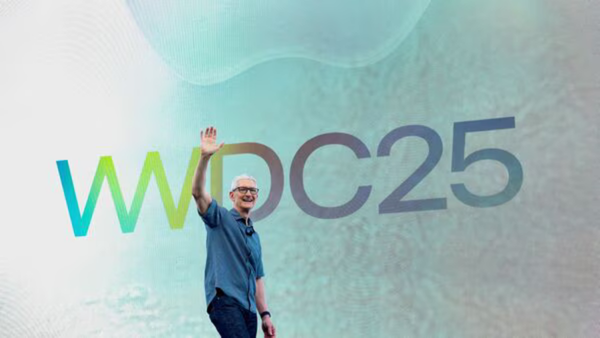Apple’s Worldwide Developers Conference (WWDC) 2025 has just wrapped up, and the annual event delivered a slew of announcements that set the tone for the company’s software and AI ambitions in the coming year. While previous WWDCs have often been marked by hardware reveals and one-off innovations, this year’s conference was all about software, intelligence, and a new design vision that will shape the Apple ecosystem for millions of users worldwide.

A New Era of Apple Software: iOS 26, macOS Tahoe, and More
The headline news from WWDC 2025 is Apple’s sweeping software overhaul. Tim Cook and the Apple team unveiled iOS 26, iPadOS 26, macOS Tahoe, watchOS 26, and tvOS 26—each featuring the brand-new “Liquid Glass” design language. This marks Apple’s most significant visual refresh since iOS 7, introducing a cohesive, translucent, and immersive look across all Apple devices. The new UI brings adaptive elements, such as a lock screen clock that changes dynamically and a more centralized Games app for iPhone users.
For iPad users, iPadOS 26 is a game-changer. It introduces a powerful new windowing system, allowing users to freely resize and organize app windows, making the iPad experience more like a desktop. The update also brings the macOS Preview app to iPad, a revamped Files app, and enhanced audio features, further blurring the line between tablets and computers.
On the desktop, macOS Tahoe extends the Liquid Glass UI to Macs, adds Live Activities in the menu bar, and introduces a smarter Spotlight search with direct actions. Notably, Mac users can now manage iPhone calls directly from their computers, deepening the integration between Apple devices.
For wearables, watchOS 26 debuts a Notes app, automatic volume adjustment, and new gesture controls like Wrist Flick, while tvOS 26 refreshes the Apple TV+ interface and allows AirPlay speakers to be set as permanent audio outputs.
Apple Intelligence: Smarter, More Private, and Developer-Friendly
Artificial intelligence was the central theme of WWDC 2025, but Apple’s approach stood out for its focus on privacy and on-device processing. The company announced major upgrades to Apple Intelligence, its suite of AI-powered features spanning iPhone, iPad, Mac, Apple Watch, and Vision Pro devices.
Key Apple Intelligence enhancements include:
- Live Translation: Real-time translation for messages, FaceTime, and phone calls, accessible across Apple devices—even when using AirPods. This feature aims to break down language barriers for global communication.
- Visual Intelligence: Improved ability to analyze and understand what’s on your screen, making it easier to interact with content, identify objects, and perform context-aware actions.
- Image Playground and Genmoji: New creative tools for self-expression, allowing users to generate custom emojis and playful images using AI.
- Shortcuts Integration: Apple Intelligence can now power Shortcuts, enabling users to automate complex tasks with a single tap or voice command. Developers can also access the on-device large language model, paving the way for smarter, more private app experiences.
These features are designed to work even when users are offline, ensuring privacy and speed. Apple emphasized that its AI models are becoming more efficient and capable, and by giving developers access to the on-device foundation model, the company hopes to ignite a new wave of intelligent app experiences.
A Unified Naming System and Design Vision
Another notable change is Apple’s new approach to naming its operating systems. Instead of simply incrementing version numbers, Apple will now align OS names with the year following their release—so iOS 26, macOS 26, and so on—mirroring the automotive industry’s model-year convention. This move is intended to bring clarity and consistency across the Apple ecosystem as the company continues to expand its software offerings.
The Liquid Glass design language ties all platforms together visually, creating a seamless experience whether you’re using an iPhone, iPad, Mac, Apple Watch, or Apple TV. This unified aesthetic is likely to be a major talking point among users and developers as the updates roll out later this year.
No Major Hardware, But Hints of What’s Next
Unlike some past WWDCs, this year’s event was light on hardware announcements. While rumors circulated about a possible HomePod smart display, the focus remained squarely on software and AI. This may be a strategic move as Apple faces increased regulatory scrutiny, competitive pressure in the AI space, and the need to reassure developers and users that it remains at the forefront of innovation1.
However, the upgrades to Apple Intelligence and the deep integration of AI across all platforms suggest that new hardware—especially devices designed to leverage these capabilities—could be on the horizon.
The Road Ahead: What WWDC 2025 Means for Apple Users and Developers
WWDC 2025 marks a pivotal moment for Apple. The company is betting big on AI, privacy, and a unified design language to keep its ecosystem fresh and competitive. By empowering developers with new tools and APIs for Apple Intelligence, Apple is laying the groundwork for a smarter, more connected future.
For users, the updates promise a more immersive, adaptive, and intelligent experience across all Apple devices. Whether you’re excited about the new Liquid Glass look, smarter multitasking on iPad, or the privacy-first approach to AI, there’s plenty to anticipate when these updates arrive this fall.


